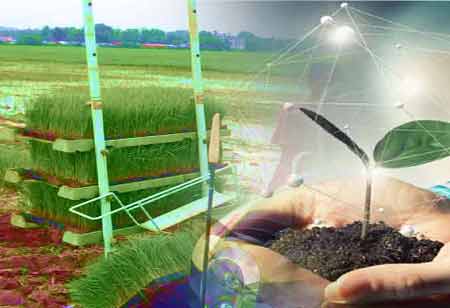Thank you for Subscribing to Agri Business Review Weekly Brief
The Need For A Vertical Farm In Your City
Vertical farming is described as growing plants stacked one on top of another Instead of along the ground in rows.

By
Agri Business Review | Thursday, November 17, 2022
Stay ahead of the industry with exclusive feature stories on the top companies, expert insights and the latest news delivered straight to your inbox. Subscribe today.
A commercial vertical farming operation can be constructed in as little as an acre and a half.
FREMONT, CA: Vertical farming is described as growing plants stacked one on top of another Instead of along the ground in rows.
There are many different methods for cultivating, but they're almost all done indoors. Plant plants in a greenhouse or grow room are grown on towers or trays piled on shelves. Each plant is granted the proper conditions for optimal growth, and since this is managed indoors, climate and seasons are no more restricting factors.
1. Vertical Farming is Local
In urban environments, it's uncommon to have real, local agriculture and farmland. Most conventional farms need space that can't be found in thickly packed cities. Profitable commercial farms, even the smaller ones, be prone to spread over hundreds of acres.
A commercial vertical farming operation can be constructed in as little as an acre & a half. That indicates you can fit many of these greenhouses in the space generally occupied by the average big box store. Additionally, vertical farms can be built in buildings, rooftops, and other currently unused spaces because they're indoor spaces.
This is just one grounds vertical farms are a great solution to the issue of food deserts. Cities without space for conventional farms can still compress in many vertical farms to feed the people, supply restaurants, and even feed underresourced families and individuals.
3. Vertical Farming is Controlled
It's clear to anyone paying attention that our food supply is hazardously vulnerable to contamination.
As vertical farming is normally managed in controlled environments, it gives far fewer opportunities for contaminants to be introduced. Some greenhouses are so composed they amount to laboratory conditions. While integrated pest management is still a focus in indoor farms, pests and contaminants are significantly lower overall. No soil or air contamination from contamination or runoff to worry about, and a cultivation process that is monitored and carefully managed.
4. Vertical Farming is Year-Round
On a conventional farm, you have seasons of planting and harvest. It might be possible to get two yields per year per crop in a few climates, but most crops are periodic. To have an approach to all of the luscious fruits and vegetables we like year-round, most cities resort to imports from external farms. Regrettably, such a practice leads to increased pollution, contamination, risk of spoilage from transport, and reduced nutrition as fresh produce ages.
Vertical farms, conversely, can create indoor climates. Temperature, UV exposure, humidity, and other conditions can all be controlled. This indicates that between a blizzard outside, you can cultivate fresh spinach or strawberries inside. In addition, it enables seasonal produce to be reaped year-round, with 11-13 yields yearly for many crops.
5. Vertical Farming Promotes Health
Urban settings provide dozens of conveniences. Most of these are certain. Residents can walk or accept public transportation to obtain where they need to, Instead of expending fossil fuels to drive everywhere. They can access all goods and services that may not be accessible in underresourced urban or rural areas.
Prepared foods or fast food have a powerful foothold in our urban environments. In some underserved areas, eating junk food for every meal is far less expensive and more convenient than cooking nutritious food at home. With the execution of urban agriculture through vertical farms, fresh, nutritious food evolves easily available to the community at affordable prices.
This enables families to throw together a healthy salad or stir fry instead of running through a drive-through. It's the best way to combat obesity and associated health conditions like heart disease or diabetes. And it can cause an overall healthier population.
6. Vertical Farming Creates Jobs
Customary farms often use seasonal workers who are paid nominally, proposed no benefits, and then abandoned as soon as the work is finished for the season. Vertical farms, conversely, offer viable employment year-round.
Their employees can gain a living wage, participate in meaningful work for the community, and often get full benefits. Other than treating our important food workers as disposable, vertical farming builds careers and supports economic growth year-round.





